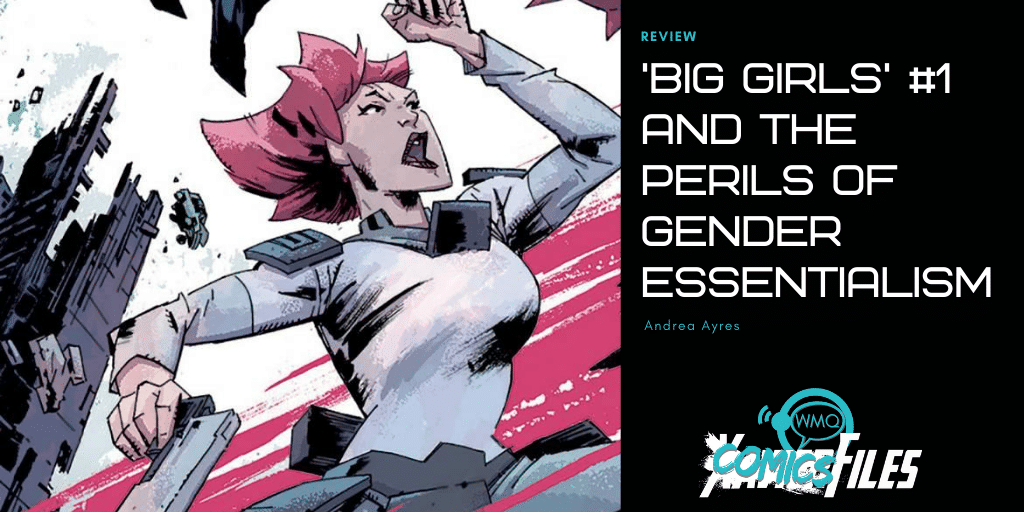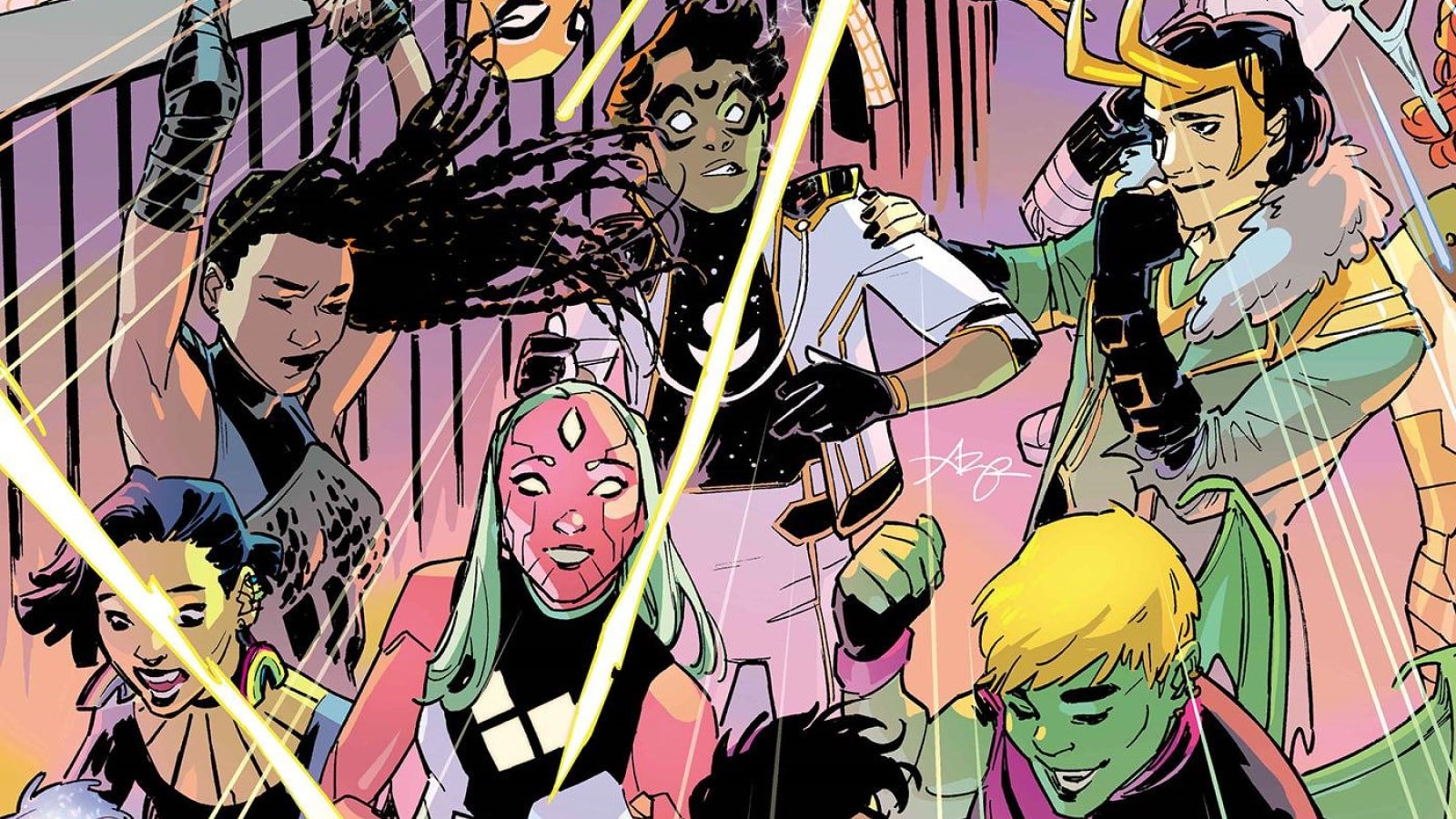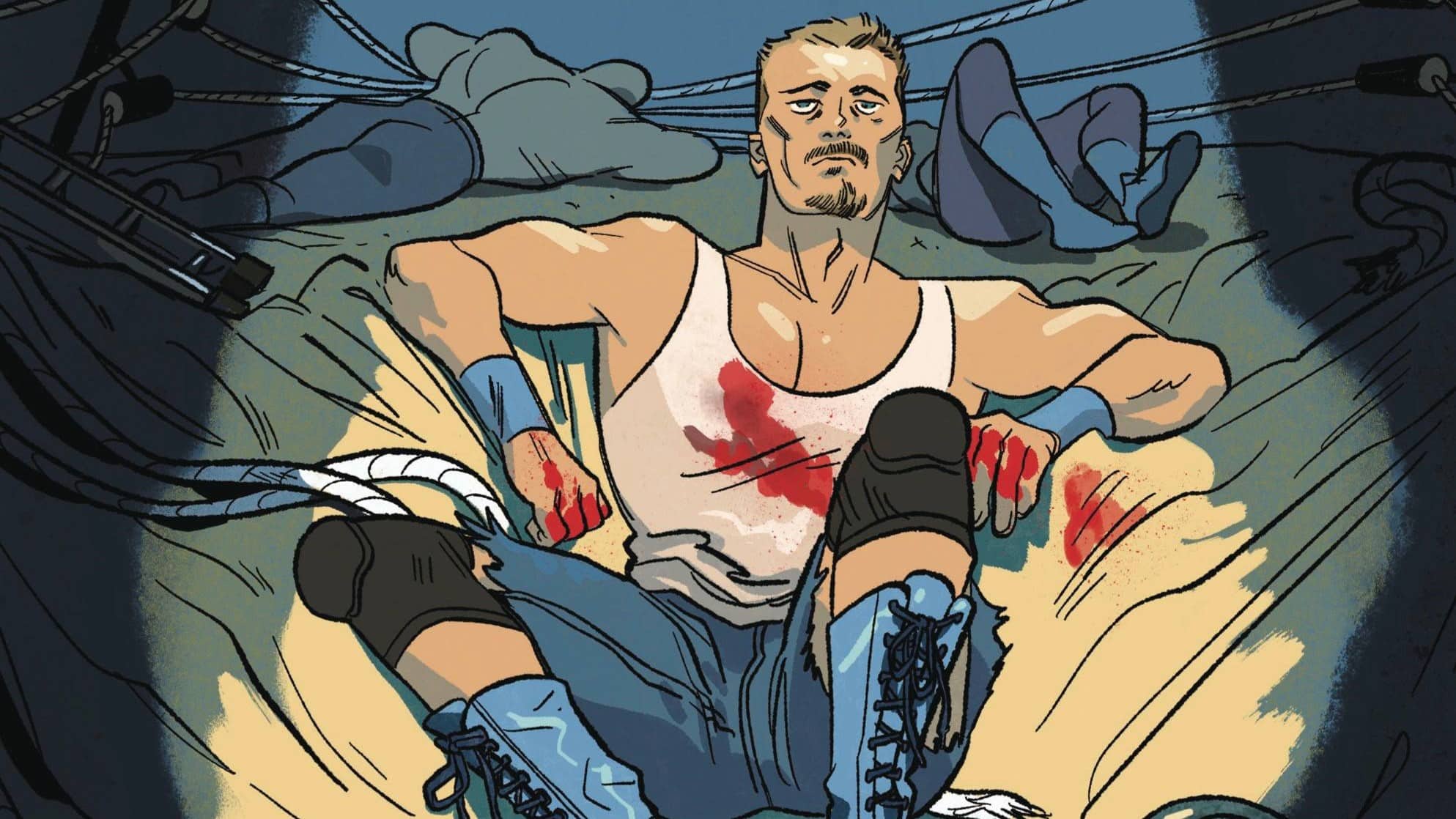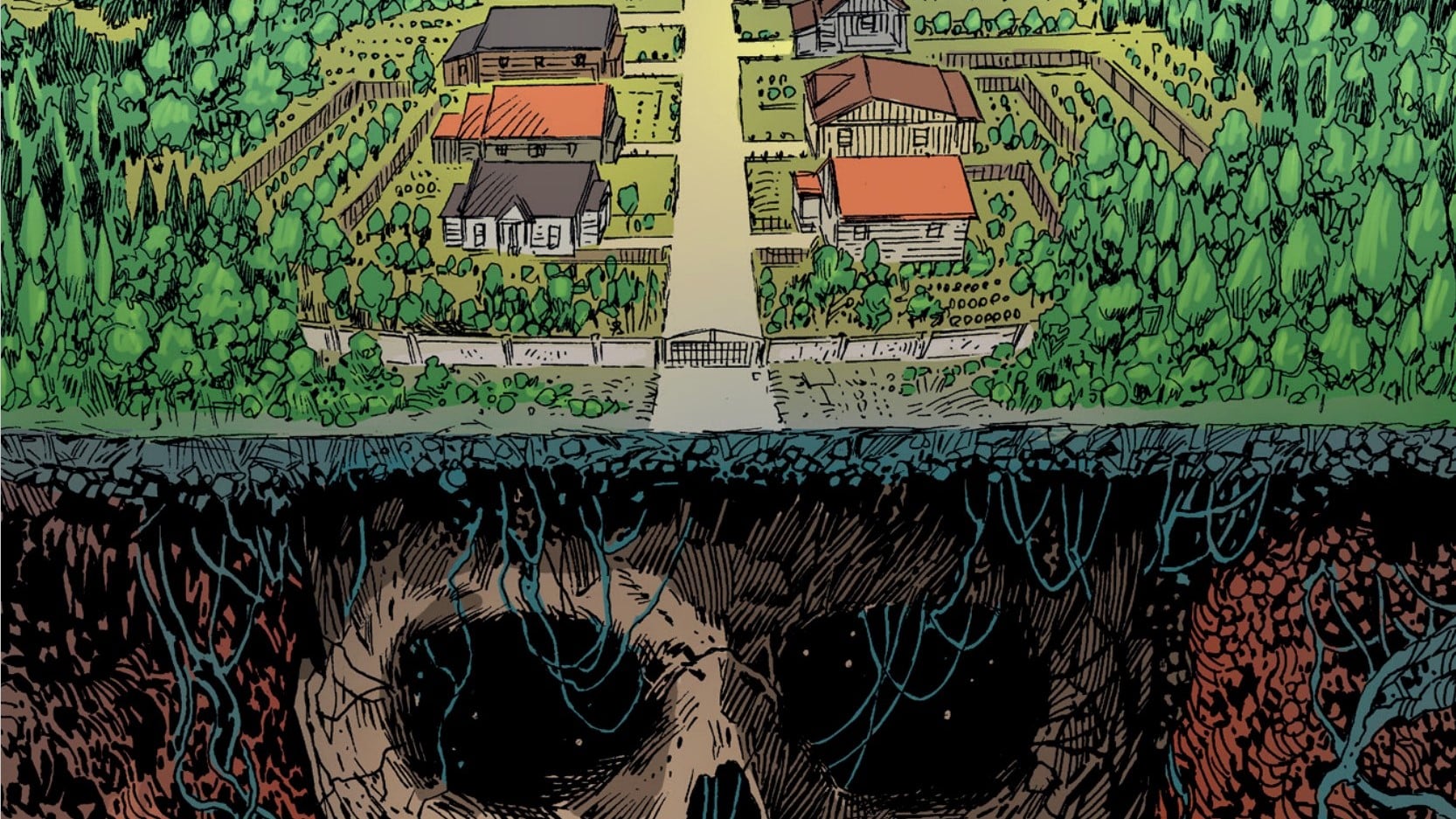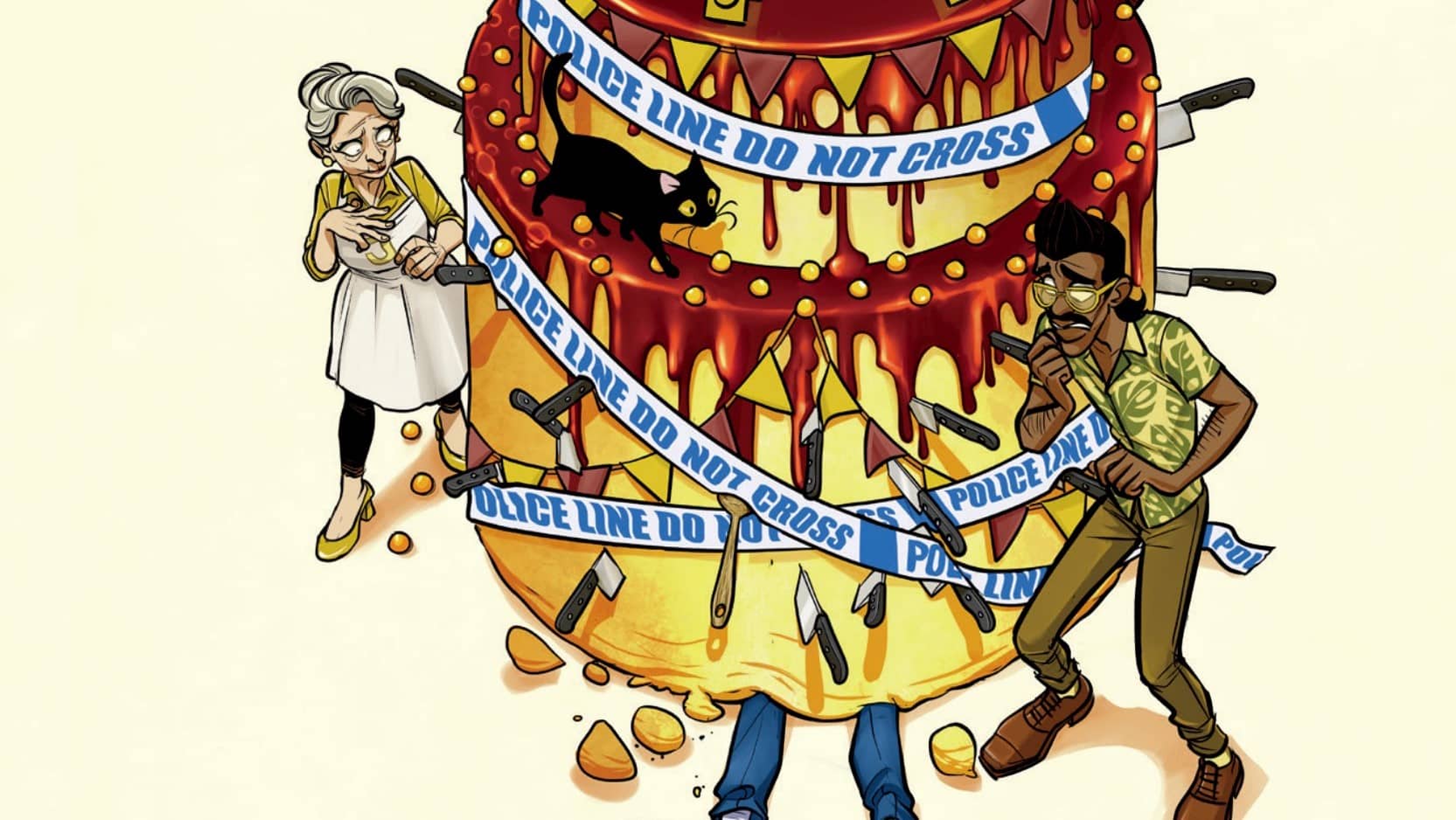[Ed. note: Contains spoilers for Image’s Big Girls #1.]
Let’s get straight into it. The premise of Big Girls #1 by Jason Howard appears interesting at first glance, right? A future world, big people fighting monsters? Yes. Cool. Cool. Except that’s about as exciting as it ever gets. Big Girls #1 wants to say more than it ever does. It promises a forward-thinking story but instead it feels trapped in the past.
Published by Image Comics, Big Girls imagines a world where men are monsters and women girls are in charge of protecting the remaining human enclave in what is known as The Preserve. Apparently, humanity experimented using some drugs which caused a large (somehow gendered) mutation and humanity almost died out. Now all pregnancies need to be registered, boys are bad and everyone needs protection from big women girls like Ember.

Essentially, not great
For Big Girls #1 to work at all, the reader must come to the page with a belief in gender essentialism. Gender essentialism says there are inherent biological and psychological differences between genders. Here’s the rub, folks: Rigid gender beliefs don’t help anyone.
Gender essentialism prevents people from seeing themselves and those around them as, you know, full people. Instead, it reduces people to traits based on a faulty and outdated understanding of biology, sociology and psychology. You don’t have to take my word for it, there’s been extensive research on the harm caused by essentialist beliefs. Those who hold these beliefs are more likely to justify inequality and inequities between groups. Essentialism can also lead people to focus on negative characteristics and outcomes. Basically, it increases our outgroup bias. This is not to mention the harm it causes others.
Stereotypes based on essentialism can cause people to doubt their intellect and ability to acquire new skills. In fact, simply being made aware of a negative stereotype (e.g. girls are bad at math) can increase negative outcomes. It can contribute to issues like test anxiety or prevent people from choosing a career they believe isn’t meant for them. Essentialist beliefs limit our ability to grow, change and develop new skills and abilities. That’s because these belief systems see certain traits (like being good at math) as fixed, as opposed to malleable and adaptable. While much of our essentialist thinking is rooted in messages we receive when we are younger, it can impact us for life. The good news is we can combat essentialist framing by teaching children what it looks and sounds like. We can also combat our own essentialist beliefs by simply being made aware of their existence.
I know what you are thinking. Why does this matter at all? It’s just a comic!
Big Girls is meant to be a story poking fun at gender roles, but it fails in this because it relies on gender essentialism as its main premise. It activates the very stereotypes and biases it professes to be against, and I don’t think it’s smart enough or written well enough to overcome that. This leaves the main gambits of issue #1 as listed below:
- “HA! You didn’t expect girls to be BIG, did ya?”
- “Men are monsters, and also REAL monsters!”

I know. I know. It’s the first issue. Guess what, if the story improves over the next few issues, I will eat my hat. I will put it in the InstantPot with some salt, let it stew and consume it. I don’t know where this story is headed, but I am concerned because I’ve seen where it’s been.
We’ve got your generic military-type here, a character named Marshall Took. He’s got the crew cut, he’s just killed a child, and he knows best. It’s a character we’ve seen a thousand, nay, a gazillion times before. He calls Ember a poodle. He is problematic and infantilizing. None of which is surprising given the comic is called Big Girls.
Calling grown-ass people names like child, girl or boy doesn’t feel GREAT. People have the right to call and refer to themselves however they want, but that is not what is happening here. It simply feels like using the word “girl” limits the reader’s ability to view Ember as someone with full agency and accountability over their actions. Perhaps all of this might bother me less if the story wasn’t so predictable. Sometimes it feels like it isn’t taking itself seriously.

Monster pregnancies & dead babies
As mentioned previously, Ember is one of the big girls in charge of protecting the city from the male monsters called Jacks. To prevent young boys from turning into mutant monsters, all pregnancies must be registered. A father named Martin attempts to keep his 4-year-old son hidden from authorities. Sadly, Martin is found out and Ember is called in to intervene. She attempts a rescue, but Took steps in and shoots the child in the head. A scene meant to be jarring instead is rendered cheap and unnecessary thanks to pacing and tonal issues. These issues leave the reader wondering why they should care?
On the subject of dead children, whenever children die in a comic it is worth asking ourselves a pointed question: Is this a stand-in for character development, emotional development or plot advancement that the writer couldn’t take the time to figure out another way to plot? The purpose of shooting the child in the head was to get us to question the motivations of the people in charge of protecting the Preserve and the remaining humans inside. I’d like to believe there were an infinite number of ways to get us to that same conclusion, but instead we get another dead child to look at.
At the end of the issue, we are introduced to another big girl named Joanna. Joanna prefers to go by the name of Gulliver. Gulliver meets with the grieving father, and the reader is shown a teaser for what is to come: large pregnant ladies creating male monsters.
Alas.
The monstrous pregnant lady returns! An old comics standby. People who get pregnant are either busy being monsters or creating them, either way, they are usually too occupied being pregnant to have any character development of their own. As you know, pregnant people are unable to hold any other purpose than to demonstrate the terrifying complexity and horror of feminine power.
The scene between Martin and Gulliver just kinda sits there. It’s meant to be this big reveal, but I don’t care enough one way or the other. Why exactly should the reader of this comic care about any of these characters? What evidence has been given that any of them are redeemable? I’m only supposed to care because there was a dead child involved. That scene was the thread by which this comic hung its wish for the reader to develop some kind of emotional attachment to the story. Because the comic relies on overused narrative tools, it never gets the reader to the place of caring what happens next.
What’s wrong in this world?
One of the most frustrating components about Big Girls #1 occurs on Page 19 and continues through the entire action sequence between Ember and one of the Jacks.
“No more arguing about what’s wrong with the world. It’s men.”
Sigh.
That line nearly destroyed my will to continue reading the rest of the issue. It gets worse.

OK, so these Jacks are big, violent and apparently stupid? Not sure why we had to toss in some ableist language into the mix as well, but here we are. I’m not keen on the implication that violence is perpetrated by people who lack intelligence. As a society, we have this thing where we believe violent acts are committed by those who are *not* smart. That somehow education makes one less violent or less likely to be an aggressor. That’s not true. Instead, it’s more likely that classist stereotypes just make it easier for us to make excuses for violence committed by people we deem to be elite.
Ember then goes on to call Jacks bullies who are “tough on the outside, soft on the inside.” She does this while fighting a Jack who has made it into the Preserve. The characters in this world act as if their problems were beyond their foresight, which I just don’t buy. I don’t buy that people don’t know the impact their words and actions have, especially when they occur at such scale. The main foundation of Big Girls just doesn’t add up to a coherent or very believable premise.
“Nobody was prepared for the mistake, and Jacks emerged everywhere. Walls couldn’t be built fast enough or high enough…”
“…recruited Big Girls to be a living wall. A barrier to hold back the violence.”
It’s good to see that women, be they large or small, are somehow responsible for mitigating the violence of men (be they monsters or otherwise). It’s good to know that the only way for people to combat violence is apparently through more violence. I’m so tired, friends. I’m tired of stories that say to combat monsters we need to become monsters ourselves. Can’t we do better?
In conclusion:
I want weird Kaiju stories. I think a lot of people do.
Big Girls #1 ain’t it.
Will it redeem itself?
Don’t hold your breath.
" data-author-type="
Warning: Undefined array key "type" in /home4/xavierf2/public_html/wp-content/plugins/molongui-authorship/views/author-box/html-layout.php on line 18
" data-author-archived="
Warning: Undefined array key "archived" in /home4/xavierf2/public_html/wp-content/plugins/molongui-authorship/views/author-box/html-layout.php on line 19
">
Warning: Undefined array key "id" in /home4/xavierf2/public_html/wp-content/plugins/molongui-authorship/views/author-box/html-layout.php on line 39
-"
Warning: Undefined array key "archive" in /home4/xavierf2/public_html/wp-content/plugins/molongui-authorship/views/author-box/html-layout.php on line 40
itemscope itemid="" itemtype="https://schema.org/Person" >
Warning: Undefined array key "img" in /home4/xavierf2/public_html/wp-content/plugins/molongui-authorship/views/author-box/parts/html-avatar.php on line 4
Warning: Undefined array key "show_social_web" in /home4/xavierf2/public_html/wp-content/plugins/molongui-authorship/views/author-box/parts/html-socialmedia.php on line 6
Warning: Undefined array key "show_social_mail" in /home4/xavierf2/public_html/wp-content/plugins/molongui-authorship/views/author-box/parts/html-socialmedia.php on line 7
Warning: Undefined array key "show_social_phone" in /home4/xavierf2/public_html/wp-content/plugins/molongui-authorship/views/author-box/parts/html-socialmedia.php on line 8
Warning: Undefined array key "type" in /home4/xavierf2/public_html/wp-content/plugins/molongui-authorship/views/author-box/parts/html-name.php on line 17
Warning: Undefined array key "type" in /home4/xavierf2/public_html/wp-content/plugins/molongui-authorship/views/author-box/parts/html-name.php on line 19
Warning: Undefined array key "type" in /home4/xavierf2/public_html/wp-content/plugins/molongui-authorship/views/author-box/parts/html-name.php on line 21
Warning: Undefined array key "archive" in /home4/xavierf2/public_html/wp-content/plugins/molongui-authorship/views/author-box/parts/html-name.php on line 37
Warning: Undefined array key "name" in /home4/xavierf2/public_html/wp-content/plugins/molongui-authorship/views/author-box/parts/html-name.php on line 41
Warning: Undefined array key "bio" in /home4/xavierf2/public_html/wp-content/plugins/molongui-authorship/views/author-box/parts/html-bio.php on line 8

